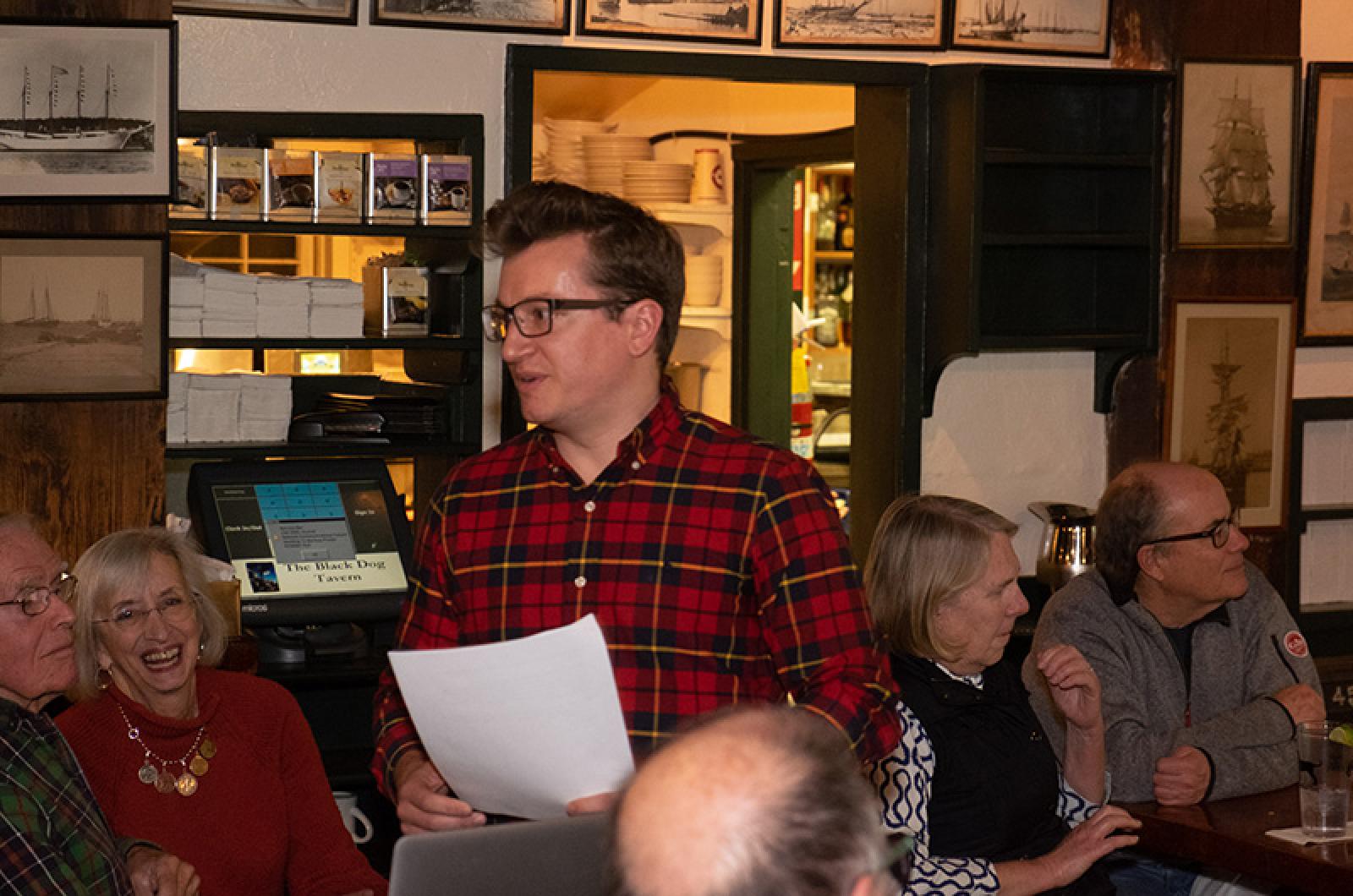The Sail Martha’s Vineyard winter lecture series began Wednesday evening with a tale of treasure, and how a team from the Woods Hole Oceanographic Institution (WHOI) found it.
Following a congenial meal at the Black Dog Tavern, guests listened to the story told by Jeff Kaeli, a research engineer from WHOI, who was part of the expedition that found the legendary Spanish galleon San Jose in the fall of 2015.
The Spanish ship was sunk in a battle with the British Navy off the coast of Columbia in 1708. Legend had it that the San Jose was the world’s most valuable shipwreck, laden with gold, silver and emeralds valued in the billions of dollars.
But the treasure was not part of the mission for the expedition team. Instead they wanted to refine and enhance their ability to find lost objects on the ocean floor, techniques that might be used to search for anything from lost cargo to aircraft that crash and sink at sea.
Mr. Kaeli recounted how the expedition team used an autonomous underwater vehicle called the Remus 6000 to systematically search the sea floor off the coast of Columbia. The vehicle drives itself over the search area according to computer instructions loaded by the engineers on the search team. The 12-foot long submarine uses optical sensors, acoustic sensors, and cameras to narrow down on interesting things located on the sea floor.
The process can be tedious, long days on the water looking at scans brought back to the ship by the underwater vehicle.
“A lot of the sea floor is boring,” Mr. Kaeli said. “It’s always boring until it’s not.”
The moment of discovery came on Nov. 27, 2015. Mr. Kaeli was assigned to take a large batch of scanned photos back to his bunk aboard the search ship, and look for anything interesting. He viewed many pictures of blank ocean floor before finding something that caught his attention.
“I see this tube sticking out,” he said. Mr. Kaeli was prepared to write the object off as industrial waste, or lost cargo. “I’m prepared to be a little let down. In the next picture, I see five cannons. This was the moment, I was alone in my bunk. I’m the only person in the world who knows we found the shipwreck. So I sit there for about 15 minutes.”
Then he went to the ship’s mess, where the crew was eating supper to relay the news.
The cannons were identified as those from the San Jose by intricate engravings of dolphins on the cannons, known from the historical record of the ship.
Mr. Kaeli studiously avoided talking about the riches buried with the San Jose on the ocean floor. It was only recently that the expedition team was allowed to reveal that it found the wreck.
“We can only really talk about, in detail, what our contribution was as of this past May,” Mr. Kaeli said. “Due to the pending litigation of who owns the shipwreck. We’re not involved with that at all. Once we found it we’re like, alright, let’s find the next thing.”
Several entities, including the Columbian government and the Spanish government, are involved in a protracted legal battle over who owns the ship and its treasure. Recovery efforts have not yet begun.




Comments (1)
Comments
Comment policy »